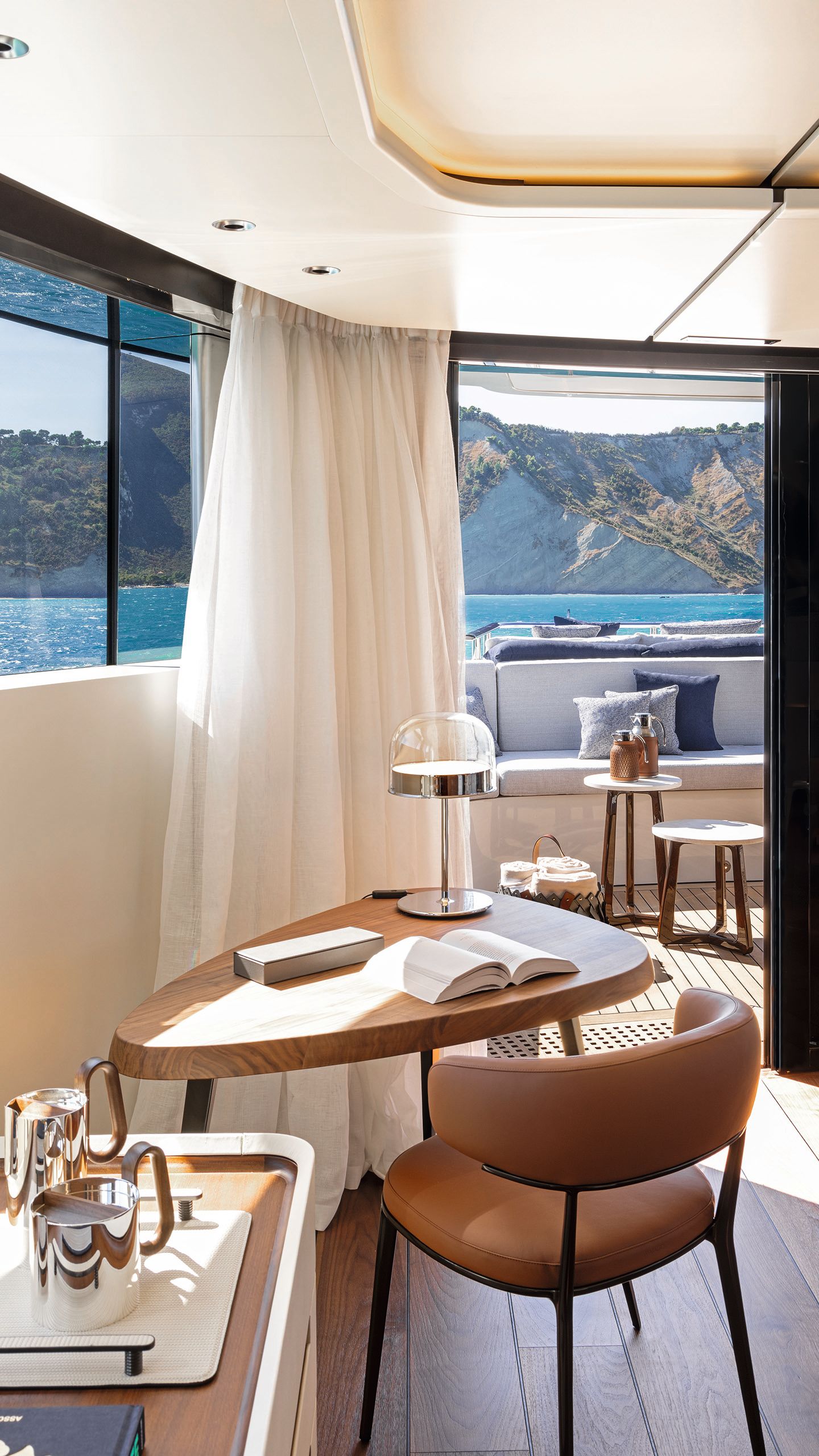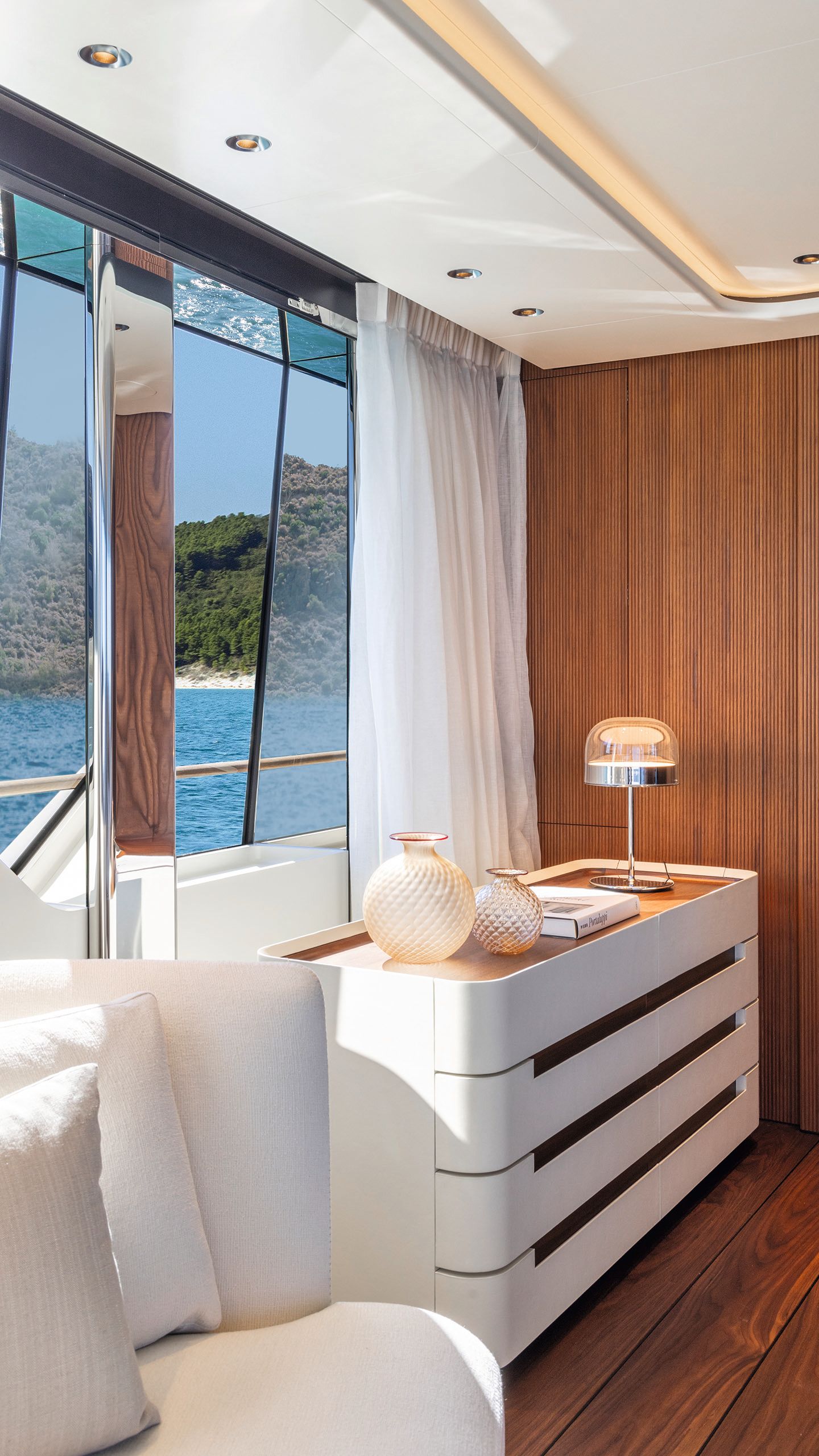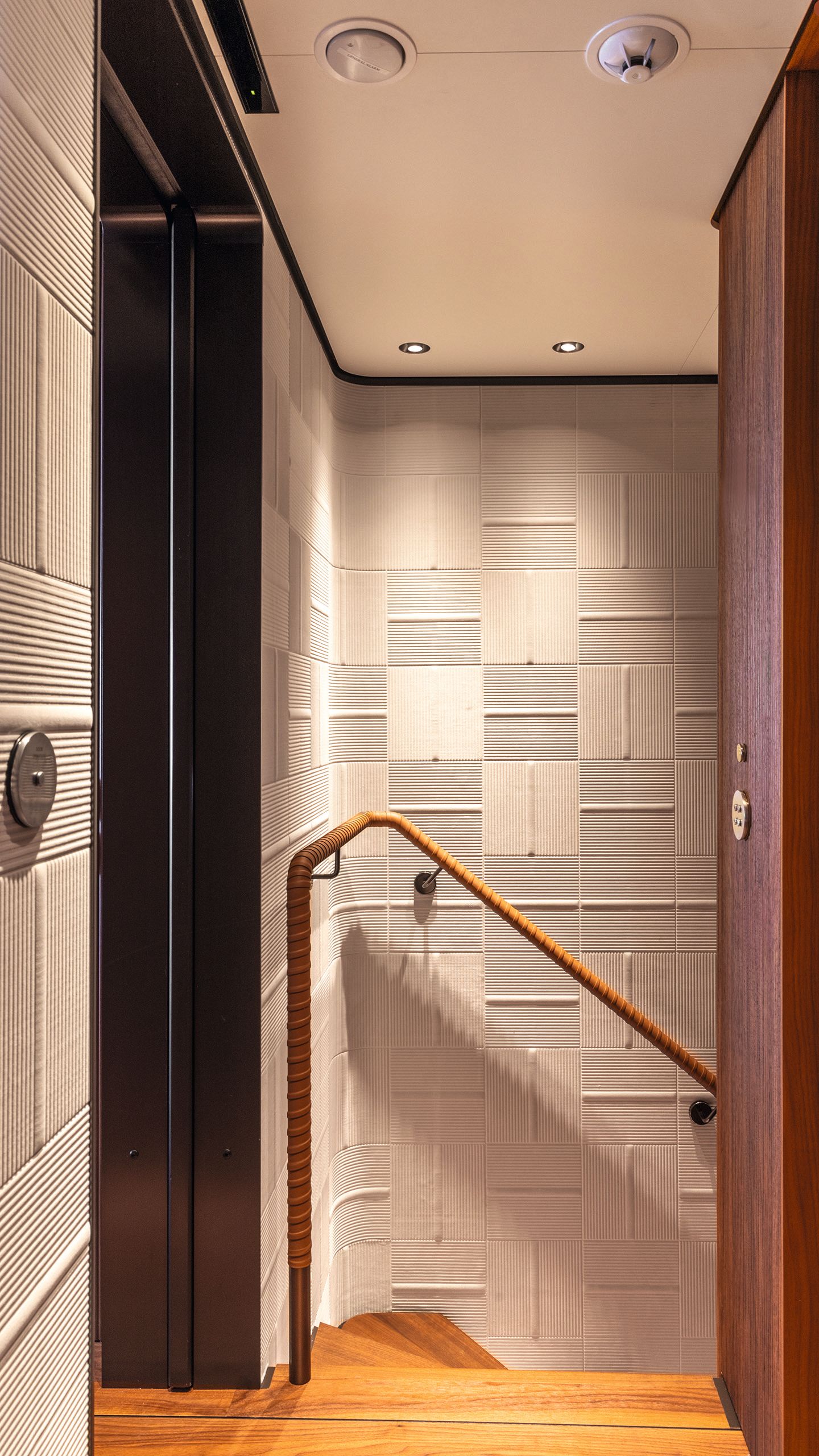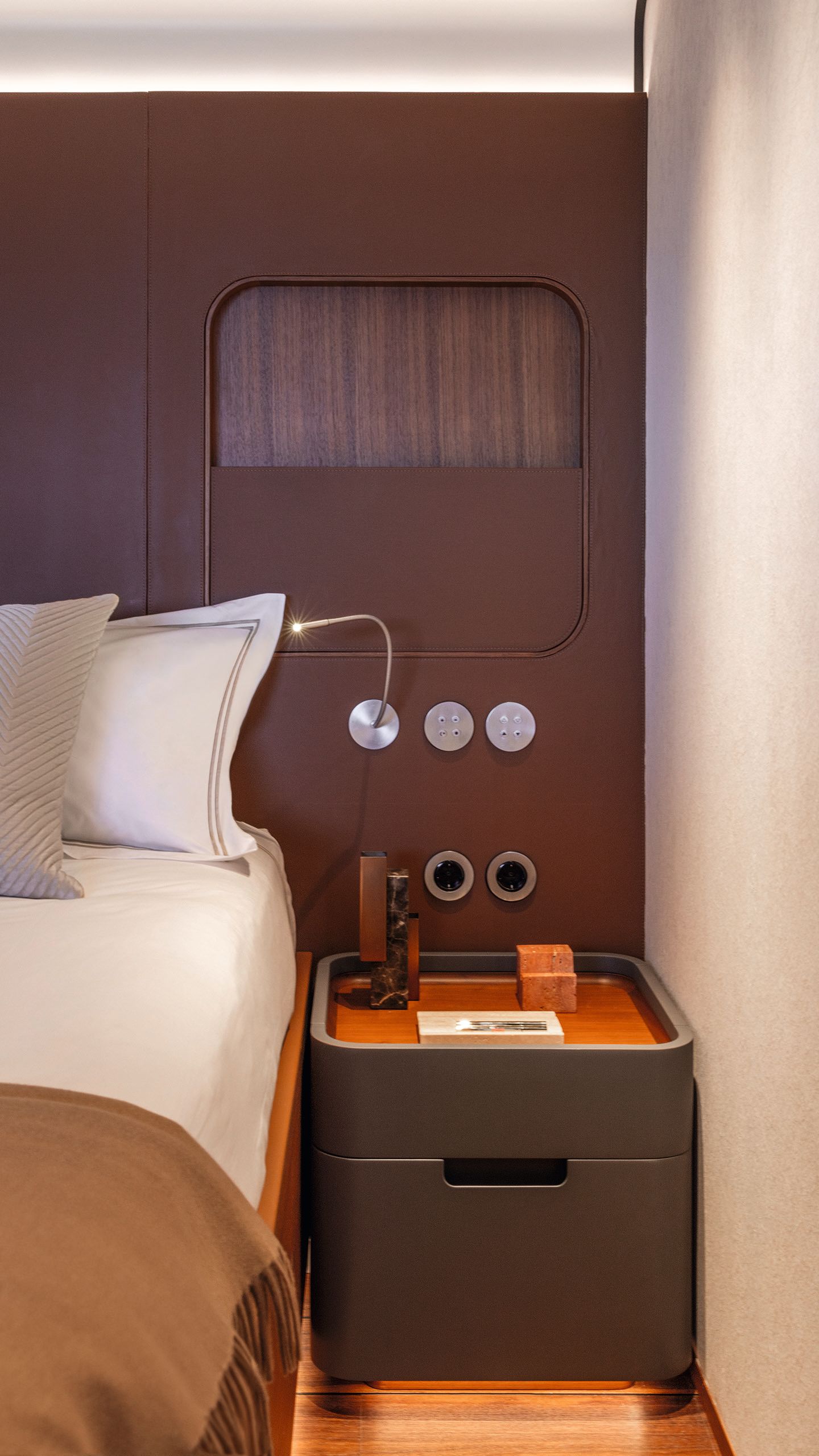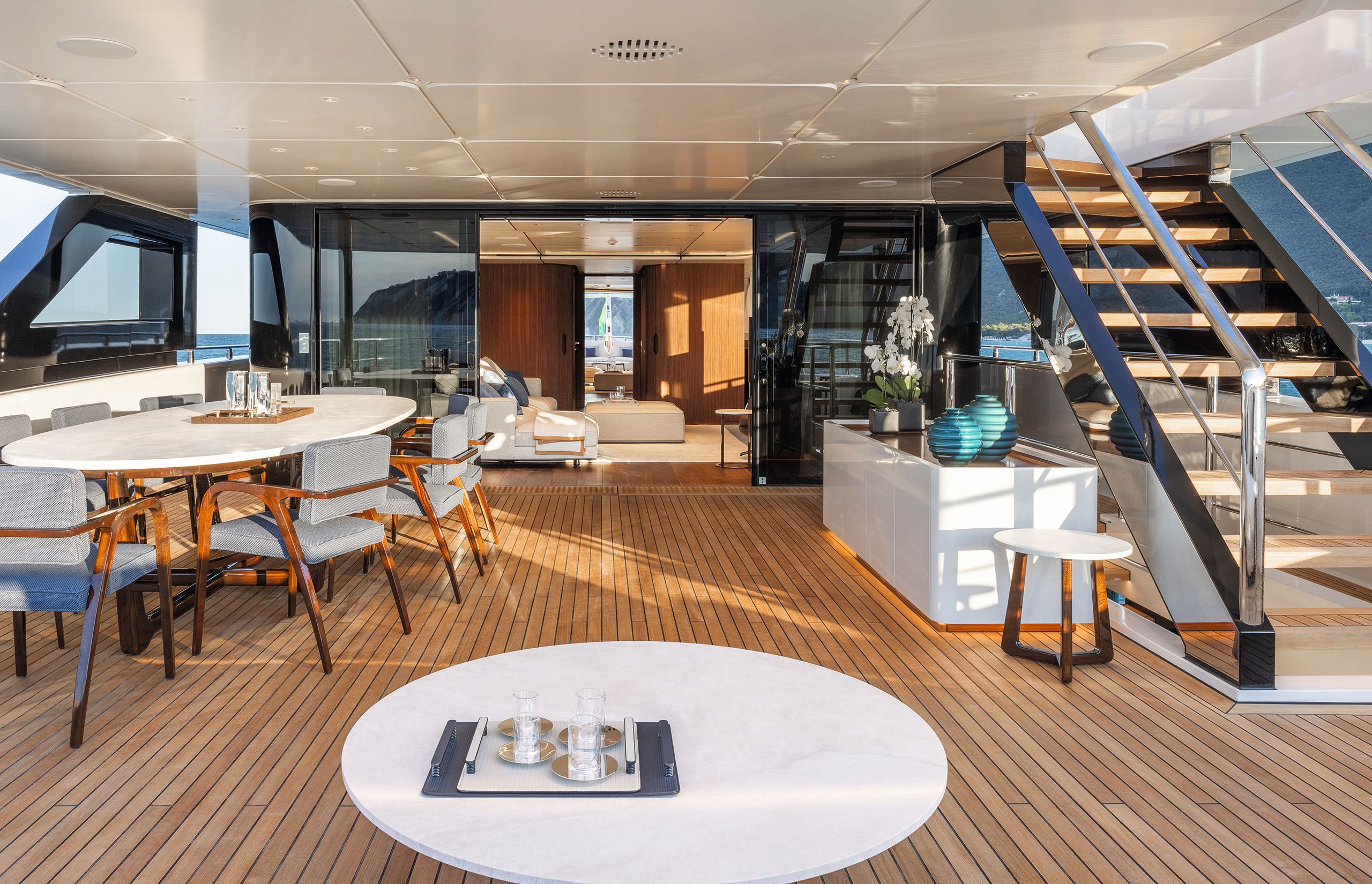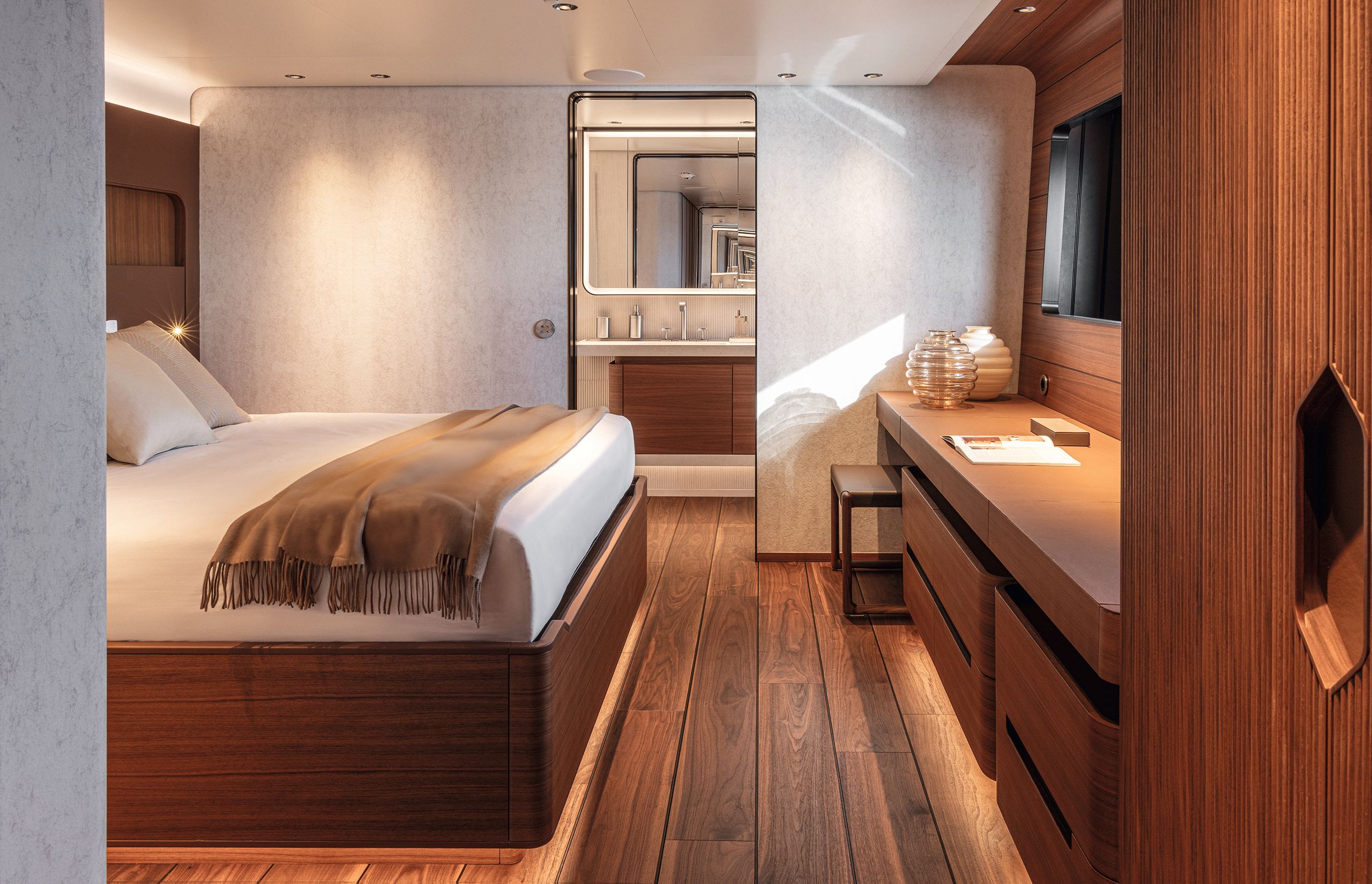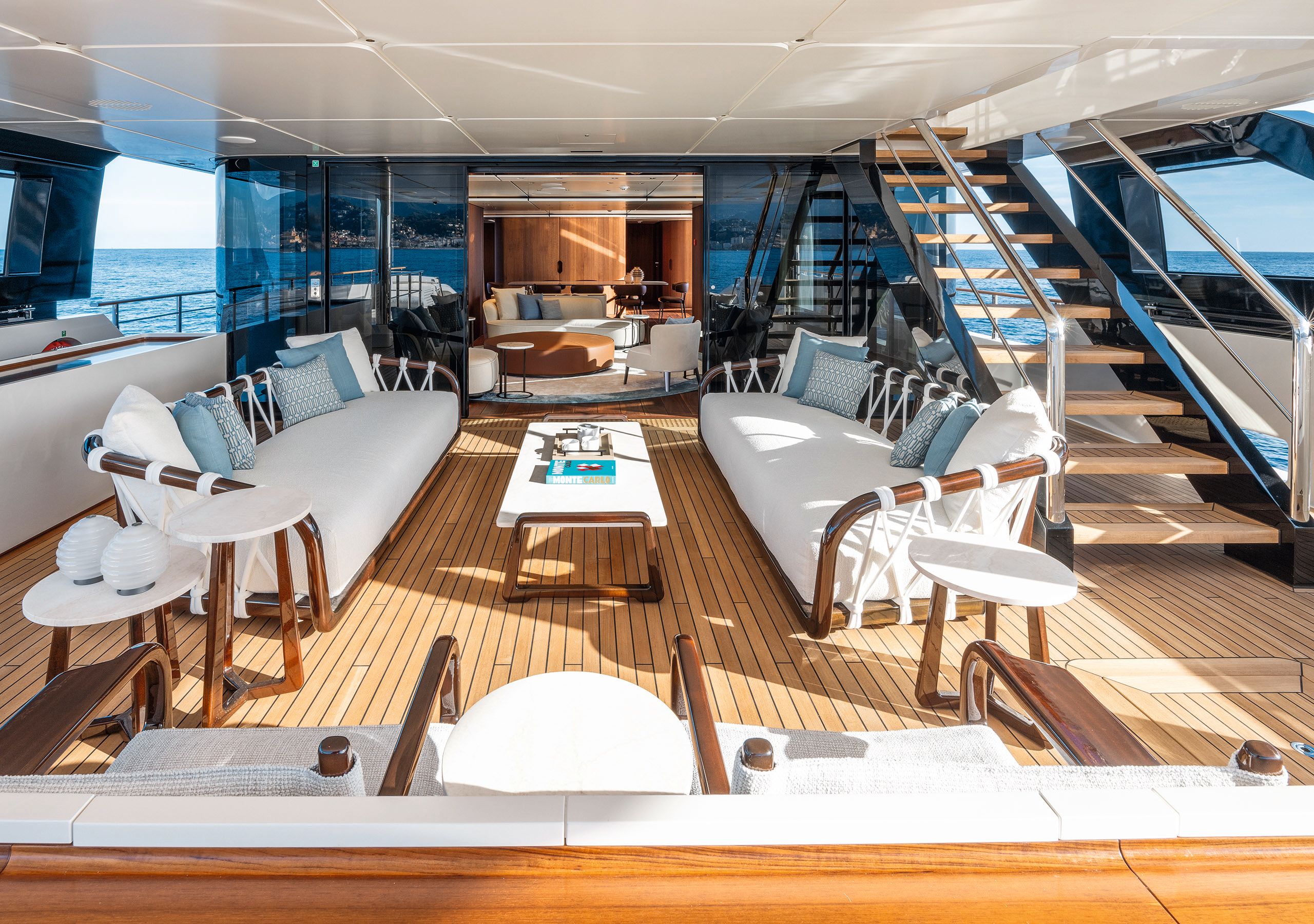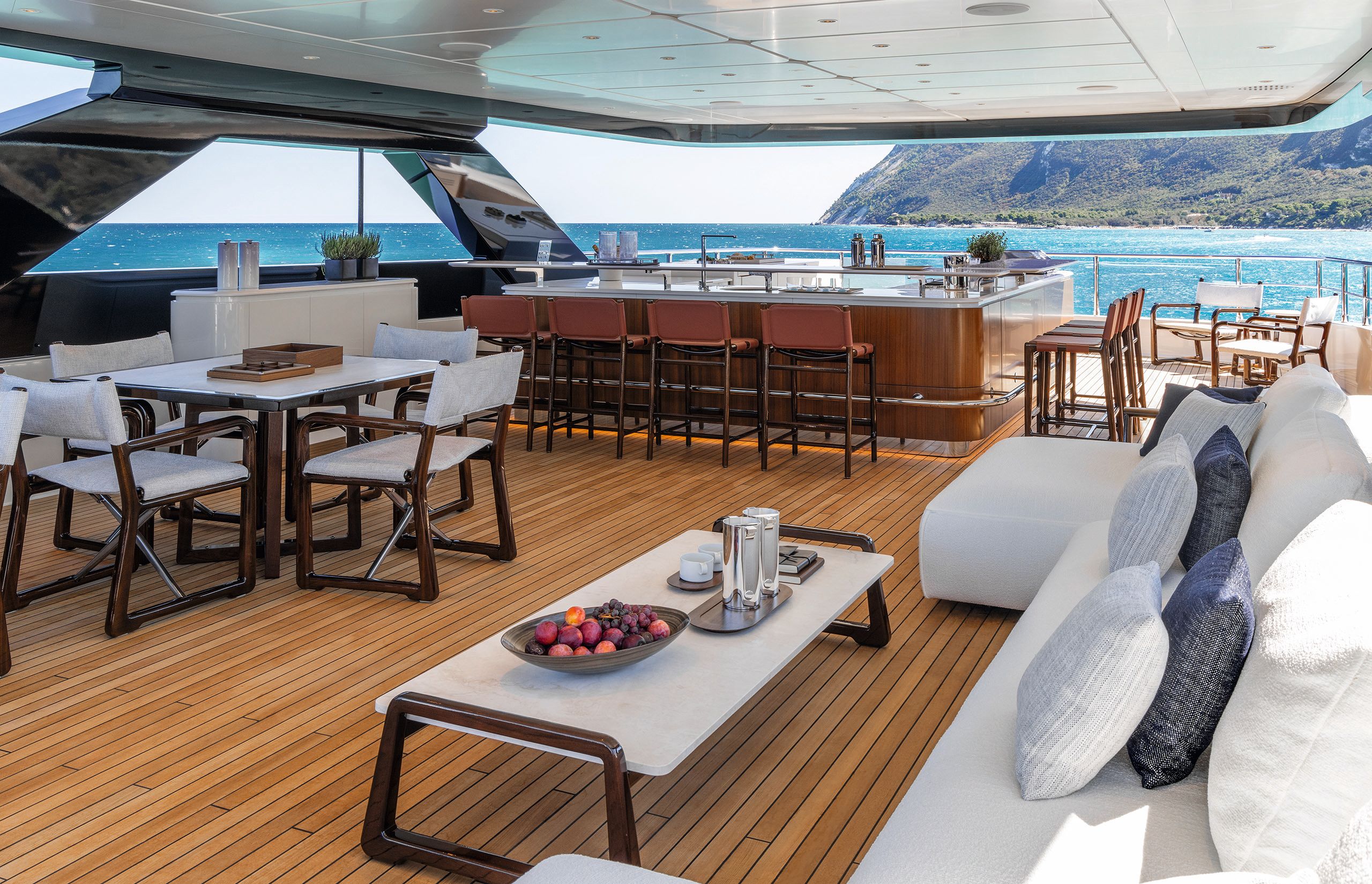HARD POWER
On board the Custom Line 50 yacht
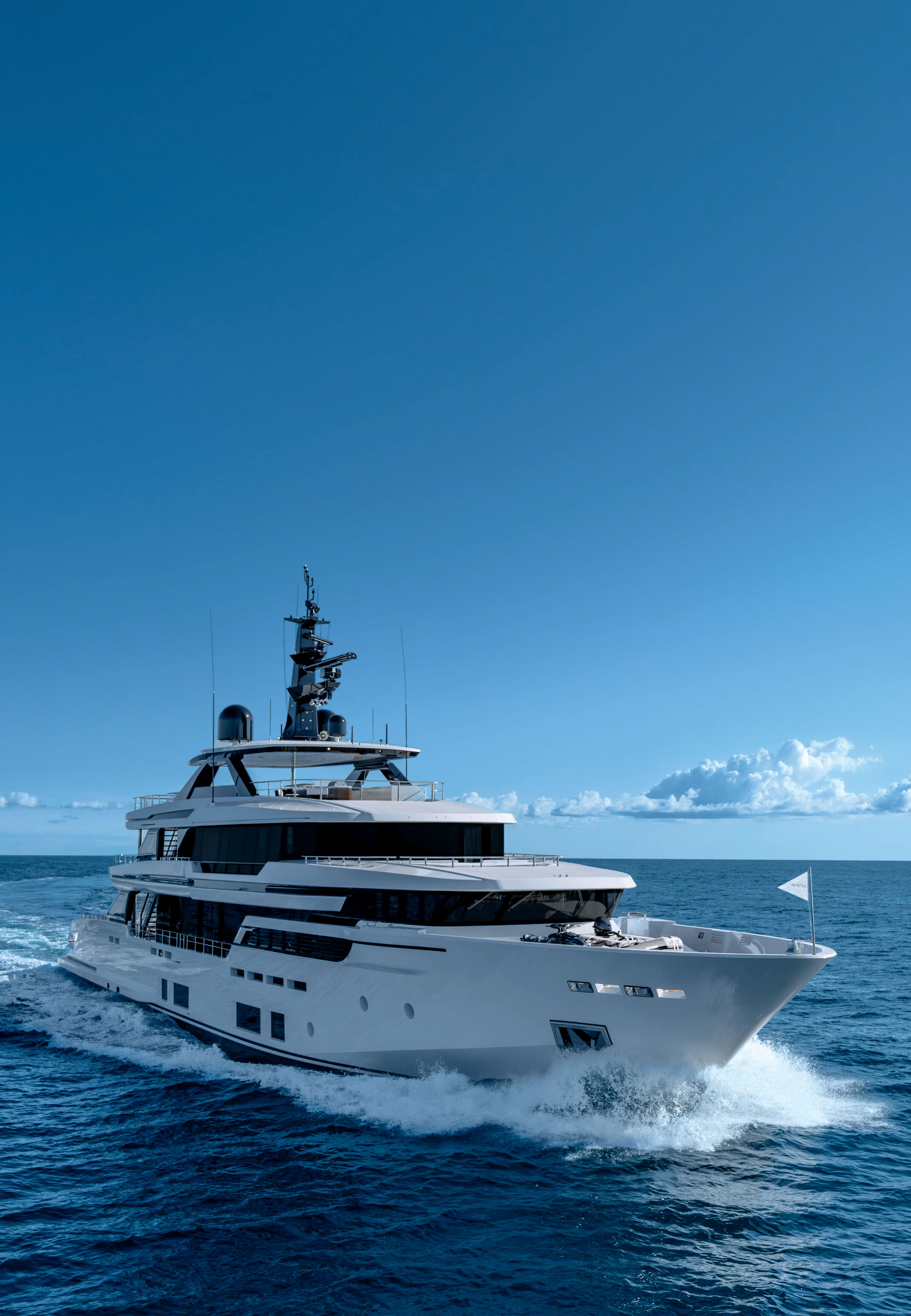
When an all-fibreglass brand introduces a metal-built model as its flagship, curiosities are naturally piqued. Katia Damborsky discovers Custom Line’s first foray into aluminium construction
COURTESY OF CUSTOM LINE
There’s nothing too crazy about a Custom Line. When the market demanded a 50-metre built in metal, Custom Line took a long look at what the competition was doing and determined that whipping out flashy new features and piling on the latest trends wasn’t the way to go. In fact, the Ferretti Group brand went the opposite way.
“What’s the one feature that nobody else has on a yacht of this size?” asked the sales team. The designers answered with a full-deck owner’s apartment complete with its own terrace, which is privately accessed and not overlooked. Other features, such as an expansive yet well-organised sundeck, juiced-up crew quarters and an efficiency-optimised hull have come together to create a new type of yacht for a yard that has built in GRP since its inception in 1996: the Custom Line 50.
The yard dropped the Navetta name from their displacement series and introduced the model as an entirely novel range built in aluminium alloy sitting under 500 gross tonnes. Exteriors are penned by Filippo Salvetti and interiors by ACPV Architects. The first hull was sold to repeat Custom Line clients, and made its debut at the 2024 Monaco Yacht Show.
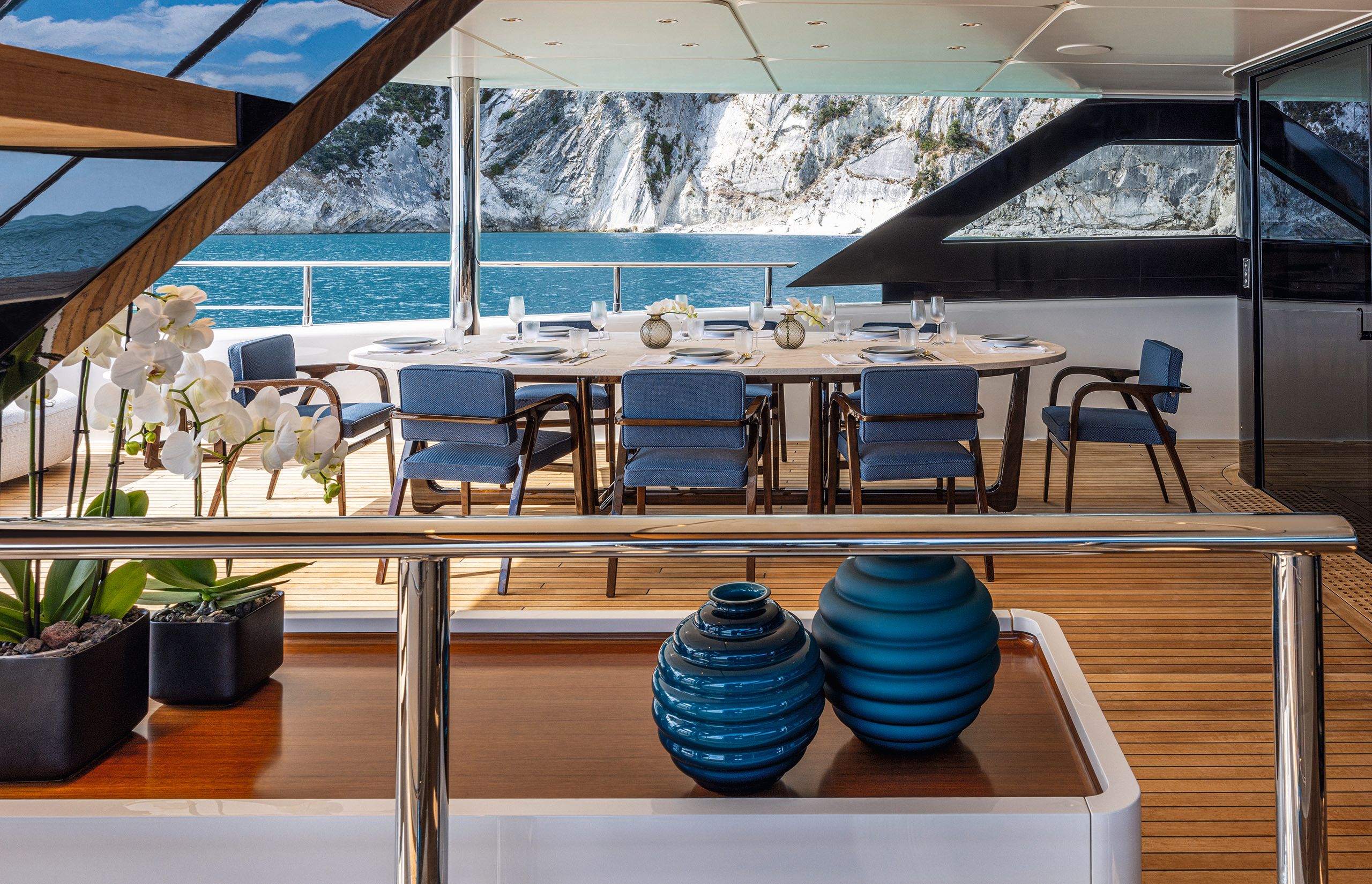
In the frenzy of the show, I arrive at my appointment on the Custom Line 50 late and rushed, tired from elbowing people out of the way on the dock and mildly dismayed to see the boat crawling with prospective clients, which makes touring a little more challenging. Ten minutes and one espresso later, I’m standing in the saloon with the doors shutting smoothly behind me, watching ribbons of sparkling light dance across the silk carpets and I feel something wash over me: calm. A sense of peace.
You're greeted with a gentle symphony of delicate colours, earthy materials and soft light
The CL 50’s pared-back styling, practical considerations in the layout and “technical touches” in the interior have led to a design that feels evolved somehow. A grown-up boat, shall we say. Patricia Viel, who is one half of studio ACPV Architects, calls it “sophisticated”.
Giordano Pellacani, Ferretti Group’s sales and marketing director, calls it “serious” and reflective of the “new tastes” of its clients. There are no bold colours, design choices that jump out at you or details that are screaming to be looked at. Instead, you’re greeted with a gentle symphony of delicate colours, earthy materials and soft light.
COURTESY OF CUSTOM LINE
Above: the pattern of the wallpaper in the central staircase is mirrored in the guest bathrooms. Darker tones on hull No 1 lend a sophisticated feel
As I expected, it’s the Custom Line owners who are guiding the design choices of the 50. “We try to follow our clients,” confirms Pellacani, and these clients are “growing up and developing new styles”.
In its 28 years, Custom Line has sent close to 300 yachts of over 25 metres out of the sheds and into the possession of their happy owners. Fast forward to 2024, though, and those owners aren’t the same fresh-faced new buyers looking for an easy-going starter boat. Their demands have changed, says Pellacani. They’re looking for longer range, more crew space and bigger volumes – and those demands can only be satisfied by the durability and flexibility that comes with metal construction.
These clients have a wealth of choice, as shipyards get more creative with metal yachts at smaller LOAs. In 2024 alone, 55 production models made of metal between 25 and 45 metres were handed over to their owners. Back in 2017, that number was just 16. Clearly, the advantages of metal construction have piqued clients’ curiosities, and that market under 50 metres has become “competitive” according to Custom Line.
“We don’t want to play that game,” says Pellacani. The 50-metre segment, however? Well, that was a game they felt safe in playing.
COURTESY OF CUSTOM LINE Nautical-inspired touches on the exterior furniture give the yacht a purposeful feel
COURTESY OF CUSTOM LINE Nautical-inspired touches on the exterior furniture give the yacht a purposeful feel
For the builder and the designer, the aim of the game was treading the fine balance between private spaces and social areas. That wouldn’t have been easy, as an entire deck had to be donated for the owner’s private use.
This was possible because the owner’s cabin has been moved onto the upper deck, pushing the wheelhouse onto the main deck forward (and slightly elevated up a small flight of stairs). It means the best views in the house, at the top of the boat, are dedicated to the owner.
“This is normal on the bigger yachts,” says Custom Line project manager Tommaso Iezzi as we walk into an owner’s suite that’s streaming with light from 180-degree windows. “But pretty uncommon below 50 metres. It means no one is walking on top of your head and when you wake up, you’re not staring at a wall.”
COURTESY OF CUSTOM LINE Pietra d’Orcia is used on the walls of the lower-deck guest accommodation. It has a sandy brushed surface that mimics wood
COURTESY OF CUSTOM LINE Pietra d’Orcia is used on the walls of the lower-deck guest accommodation. It has a sandy brushed surface that mimics wood
Attached to the cabin is a private terrace, which has been cleverly crafted so the overhang from the sundeck acts as a privacy barrier. It was this combination of liveability, natural light and far-reaching views that dictated the design direction of the 50. “It’s one of the most prominent features of the boat,” says Viel, “and it was the character of the owner’s suite that guided the interiors project.”
COURTESY OF CUSTOM LINE
COURTESY OF CUSTOM LINE
The studio envisioned the owner’s cabin as a “spacious loft” with the interior components “floating very softly” in the space. In other words, nothing feels tied down, with the indoor-outdoor flow that’s afforded by the terrace continuing into the interior. “The space was designed with close attention to the perspectives people would have inside,” explains Viel. “We wanted to emphasise the visibility. For this reason, there are no strict separations between the [passageway], the wardrobe area and the sleeping area.”
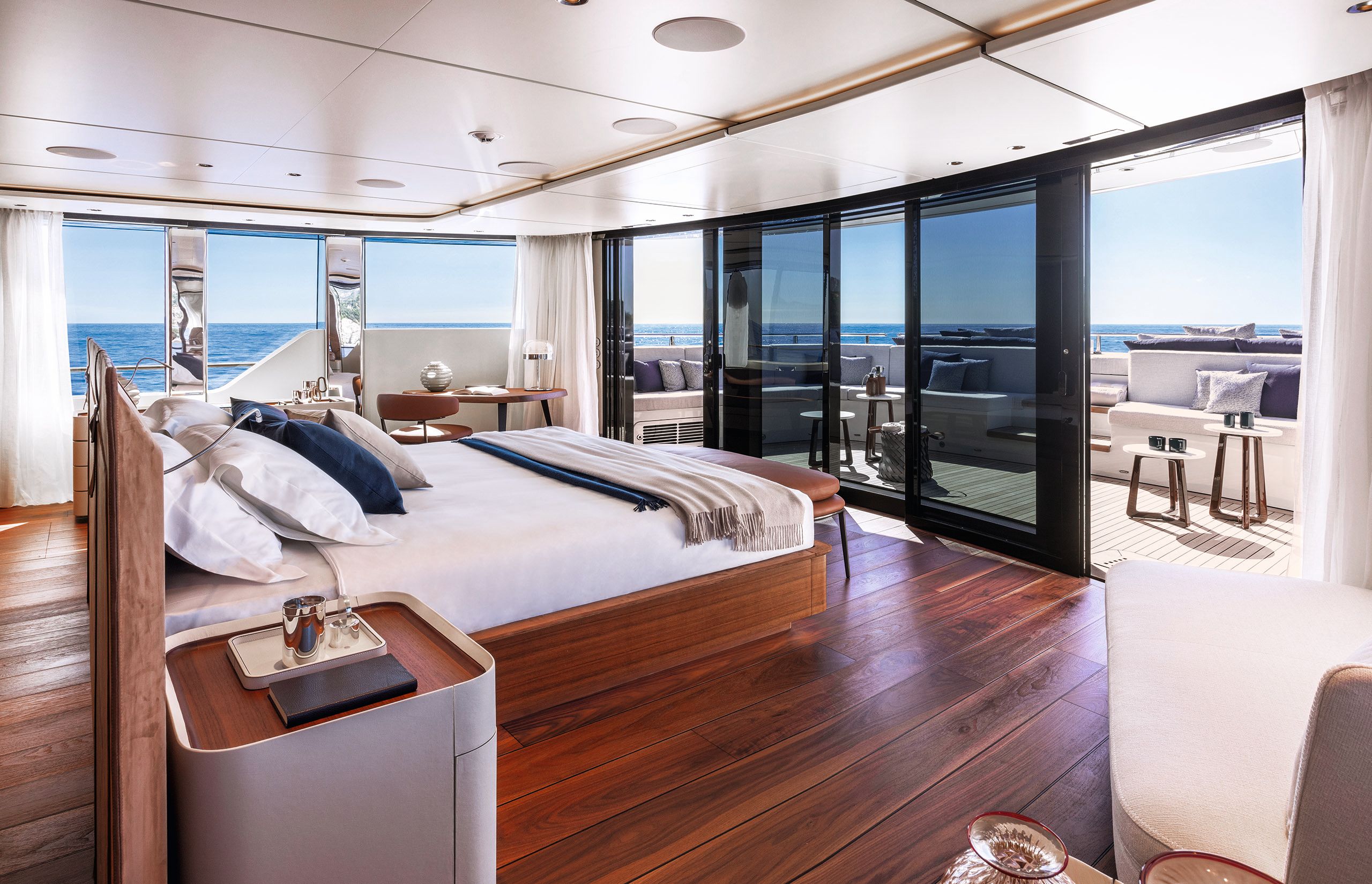
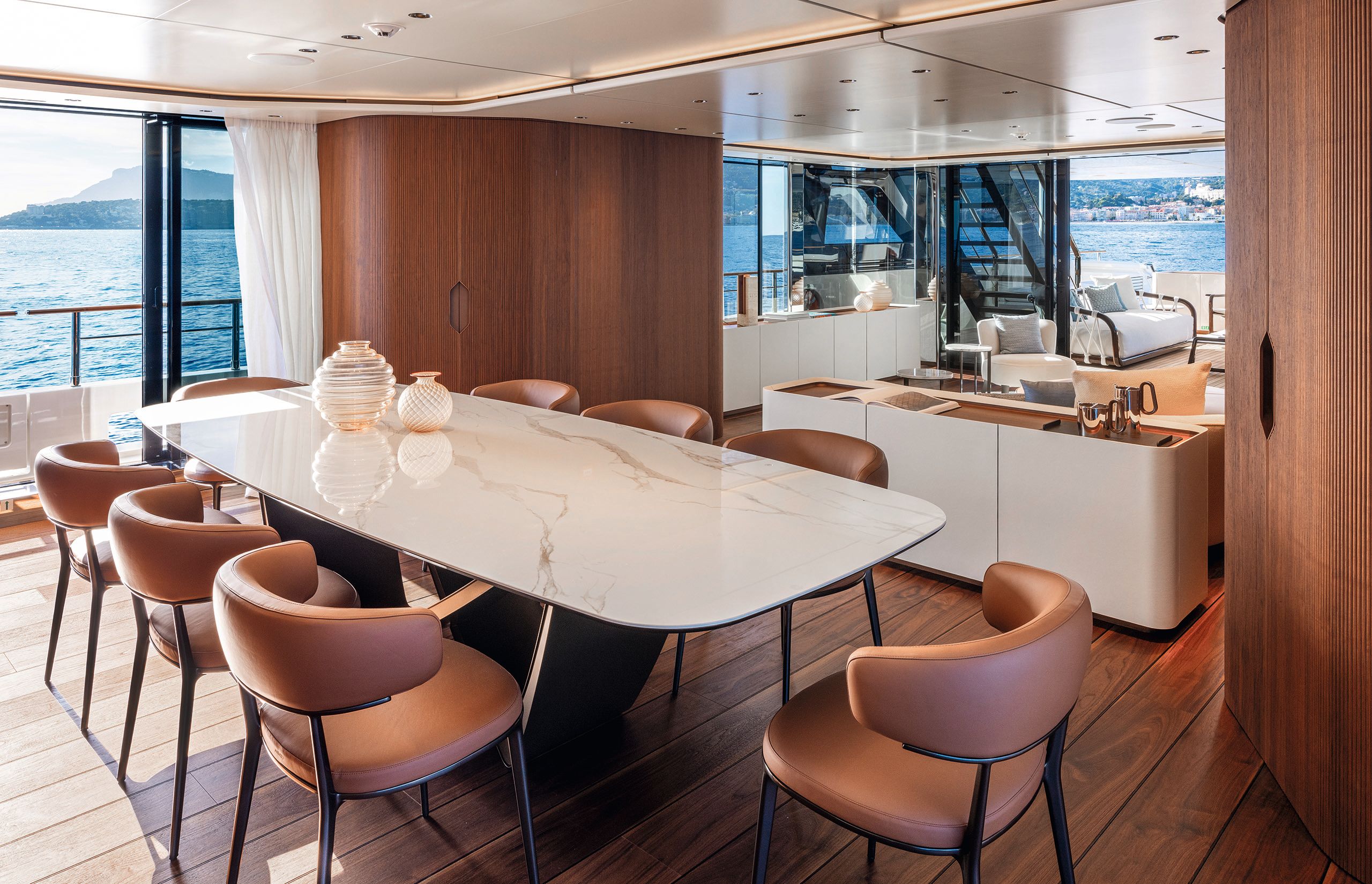
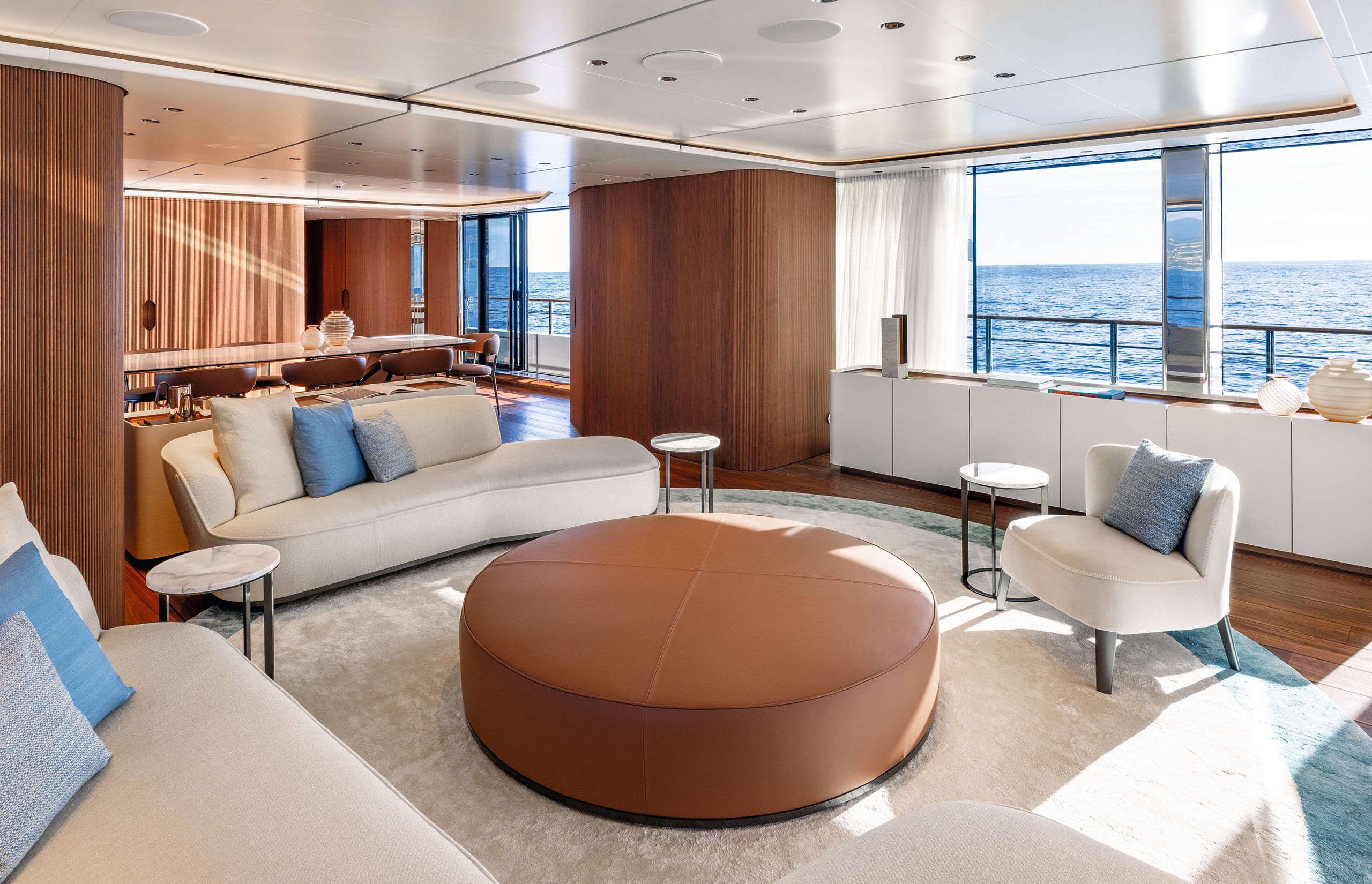
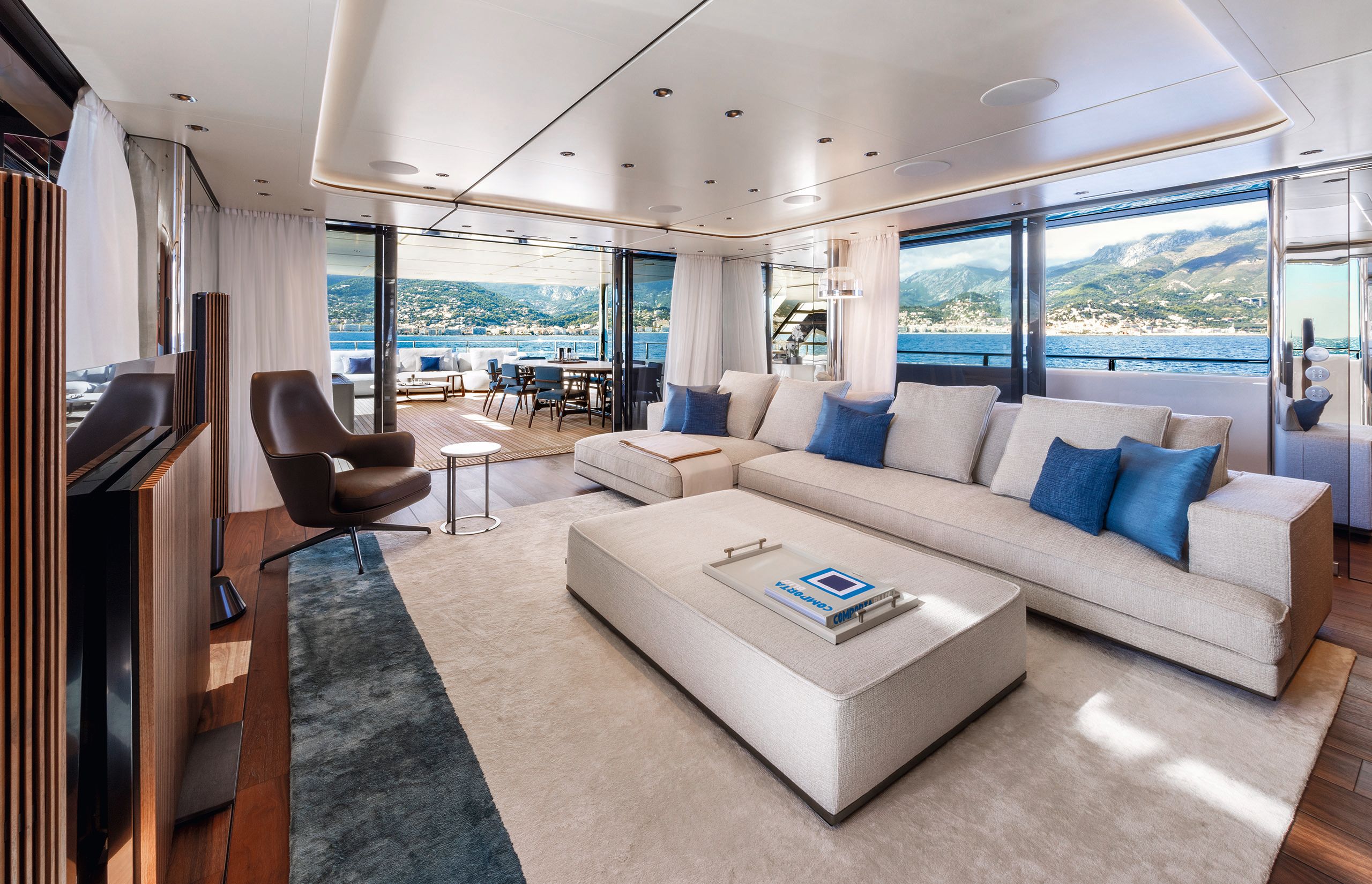
Where the separation gets more pronounced is in the saloon aft of the suite. An owner can choose to keep this private or open it up, but the general positioning remains the same. There is a small companionway connecting the two areas, which is cinched by the owner’s en suite and a sizeable pantry and technical area. These come at the cost of feeling slightly cut off from the suite, but the practicality outweighs its aesthetic drawbacks. “In case of a party, or special occasion, the area is well-equipped and the crew don’t have to be in front of you all the time,” says Iezzi.
There are no bold colours, design choices that jump out at you or details that are screaming to be looked at
A practical approach is also evident in the wall panelling of the central staircase, made by hot-pressing decorative textile on top of a sound-absorbing material to reduce the transfer of noise between decks. Common sense is built into the colour palette as well: whereas past Custom Lines had a lighter, brighter look, hull No 1 of the 50 employs slightly moodier shades of espresso and cocoa, which will be more forgiving to scuffs or stains.
This can be switched out, of course – the Custom Line Atelier works together with the owners and designers to recommend different “moods”, which are created via different materials, furniture and artworks. Weight has been considered too – for example, the Crema d’Orcia limestone that features liberally across the boat has a top layer of stone and lower layers in a honeycomb panel that keep it lightweight, without compromising the visual or textural effect.
COURTESY OF CUSTOM LINE
COURTESY OF CUSTOM LINE
And then there’s the storage. It seems as if no compartment or decorative structure has been built without space for china, glassware or cleverly integrated technical spaces. As for the crew, Pellacani says that Custom Line clients tend to care more about the comfort and well-being of their crew than some of the other Ferretti Group brands, as Custom Line owners tend to spend extended periods cruising and “happy crew equals happy owner”.
To this end, the captain’s cabin is on the main deck, just aft of the wheelhouse, with the lower deck accommodating four good-sized twin-berth crew cabins, all en suite. Most of the materials and design language that define the rest of the boat extend into the crew spaces.
Clients are looking for longer range, more crew space and bigger volumes - demands that are satisfied by metal construction
Those functional qualities don’t mean that Custom Line hasn’t been decadent in other areas. The sundeck, for example, is one of the best I saw during the yacht show. Spanning 130 square metres, it includes a selection of different seating areas, bookended by a large pool and a line-up of loose furniture.
In the middle is an American bar and multiple seating and lounging options, and Custom Line estimates that about 80 per cent of that area can be shaded. It’s a class-leading use of space – bigger than on some 60-metre CRNs.
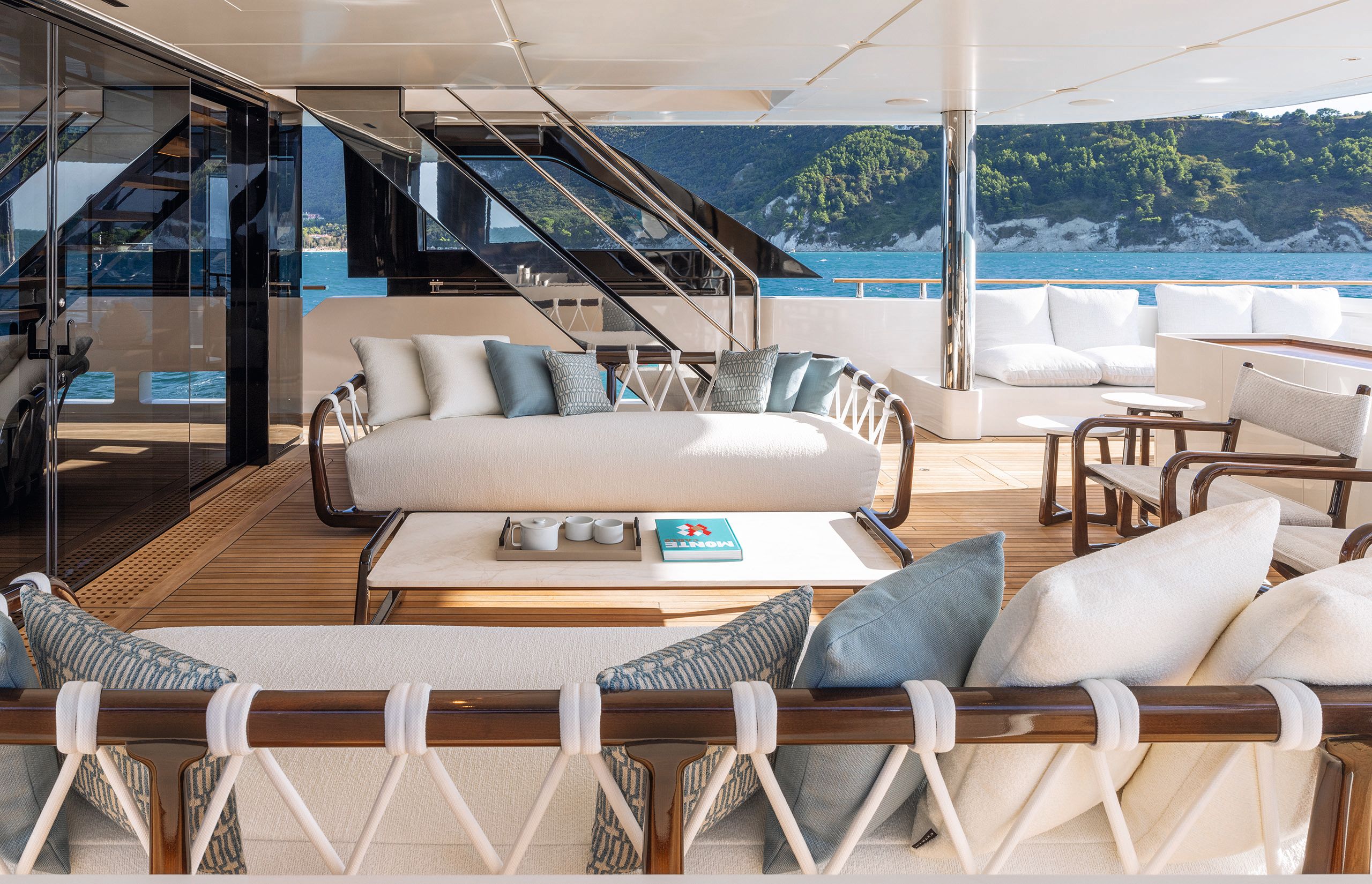

The beach club is another area where Custom Line went in all guns blazing. The pool is two metres by 3.8 metres, and it can remain filled with water while the yacht is under way. “Our yachts are not showrooms that aren’t safe to navigate,” points out Pellacani.
There’s a full 15 metres between the pool and the saloon doors, and exterior designer Salvetti managed to push back the upper deck support structures as far as possible to ensure the beach club felt open and airy. Unfolding wings on the port and starboard sides were considered, but in the end, the team opted for a more traditional unfolding transom that’s split down the middle by a set of steps that can extend below the waterline for the utmost flexibility when accessing the sea.
The best views in the house, at the top of the boat, are dedicated to the owner
Although it’s built in metal, the Custom Line 50 doesn’t have huge scope for customisation. Things like the pool placements, the finishes, the decor and the free-standing furniture are all up for debate, but everything else is pretty much defined. But that isn’t a deal-breaker for most Custom Line clients who want “to switch off and let us take care of it”, according to Pellacani.
For clients who want to be hands-on and make plenty of modifications, the 50 might not fit the bill. But for experienced clients looking for something mature and sensible, calm and un-crazy, the Custom Line 50 has the mettle to stand out in the marketplace.
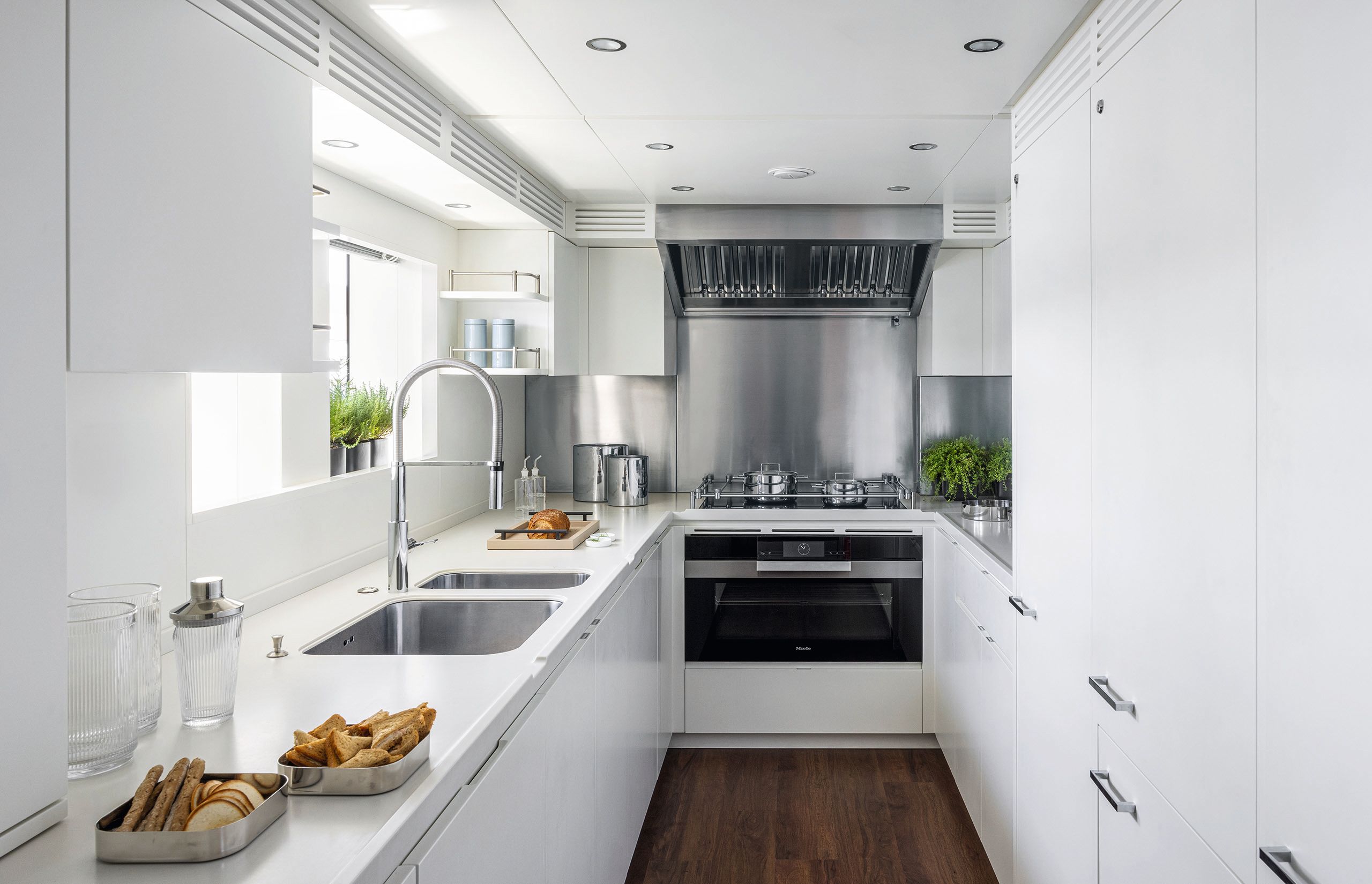
Ferretti Group's journey to metal
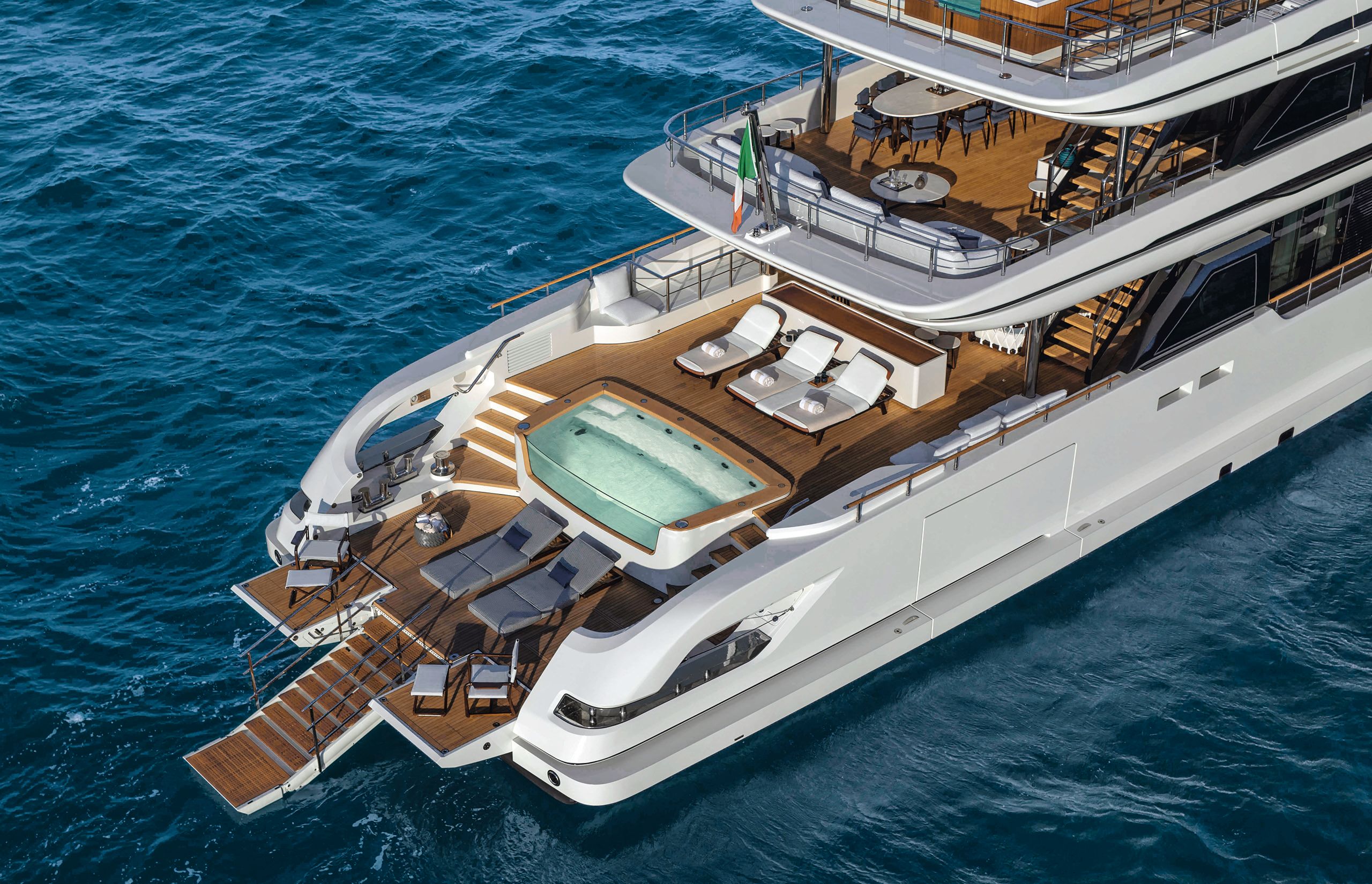
1968
Ferretti is founded as a dealership, predominantly of Chris-Craft boats.
1971
The company decides to build its first boat, a 10-metre wooden motorsailer.
1982
Ferretti’s first motor yacht is born, built in GRP.
1996
Custom Line is established, becoming the second brand in the Ferretti empire. While Ferretti was known for smaller, flybridge and open yachts, Custom Line becomes known for larger yachts with more scope for customisation.
1998 to 2004
Ferretti acquires a number of brands and shipyards, which later become known as Pershing, Riva, CRN, Itama and the now-defunct Mochi Craft.
2012
Riva becomes the first traditionally GRP yard in the Ferretti Group family to break into metal construction with the launch of the 37m 122' Mythos in aluminium alloy.
2019
Pershing branches into metal construction with the 140, also in aluminium alloy. In the same year, Ferretti Group acquires Wally.
2024
Ferretti Group establishes the Ferretti Group Superyachts Yard in Ancona, dedicated to the steel and aluminium construction of CRN, Pershing, Riva and now Custom Line.
First published in the January 2025 issue of BOAT International. Get this magazine sent straight to your door, or subscribe and never miss an issue.
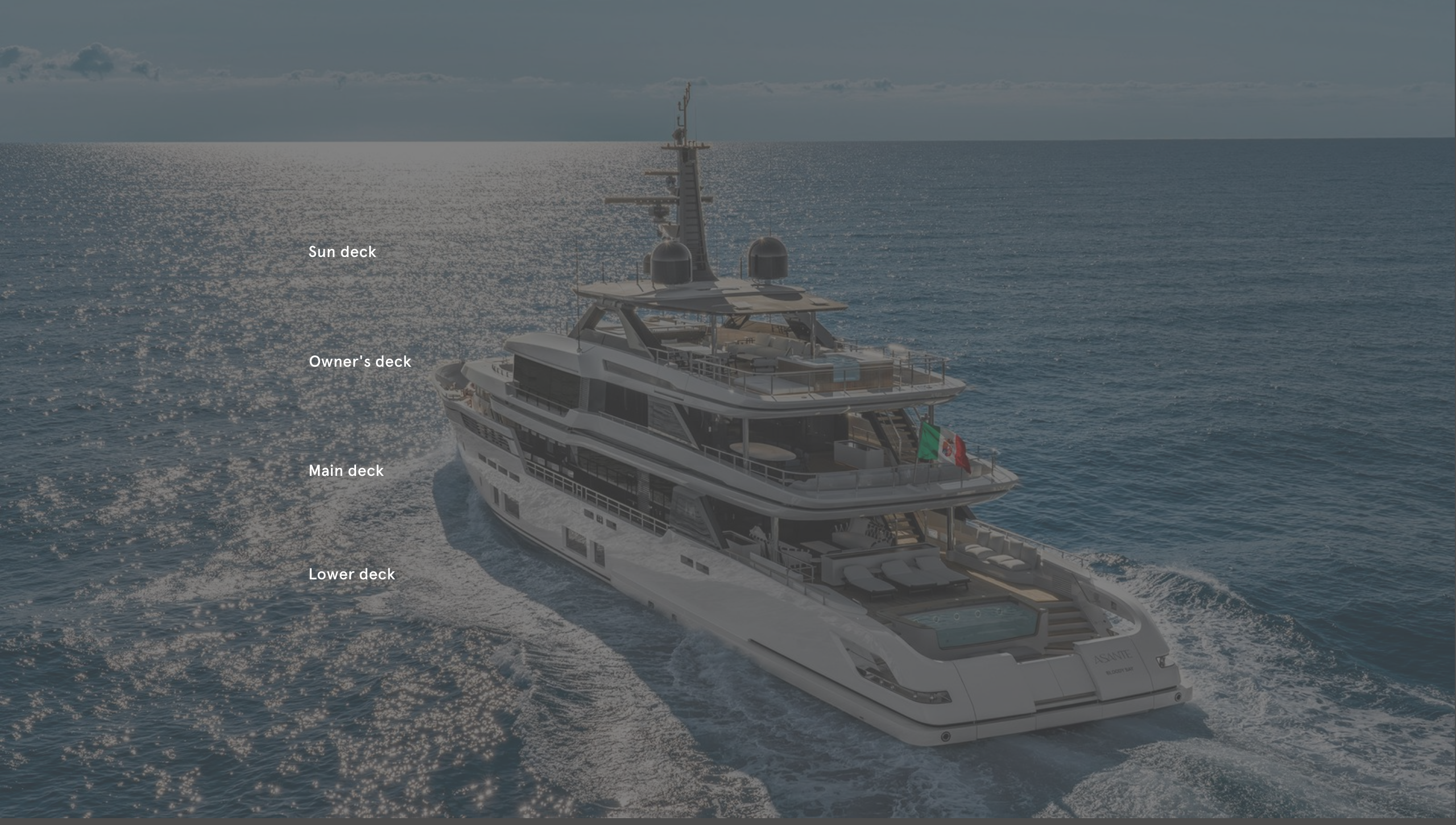
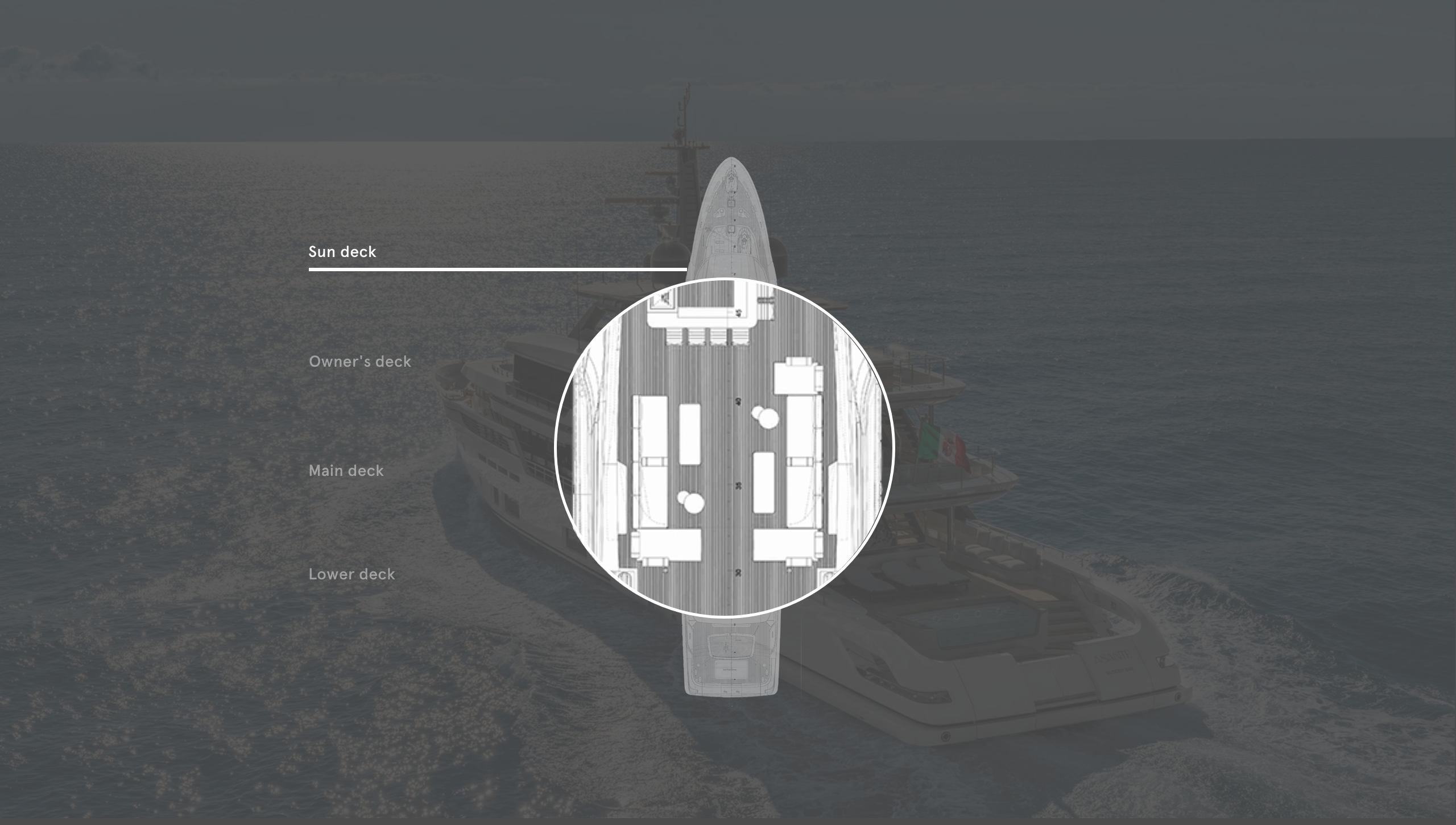
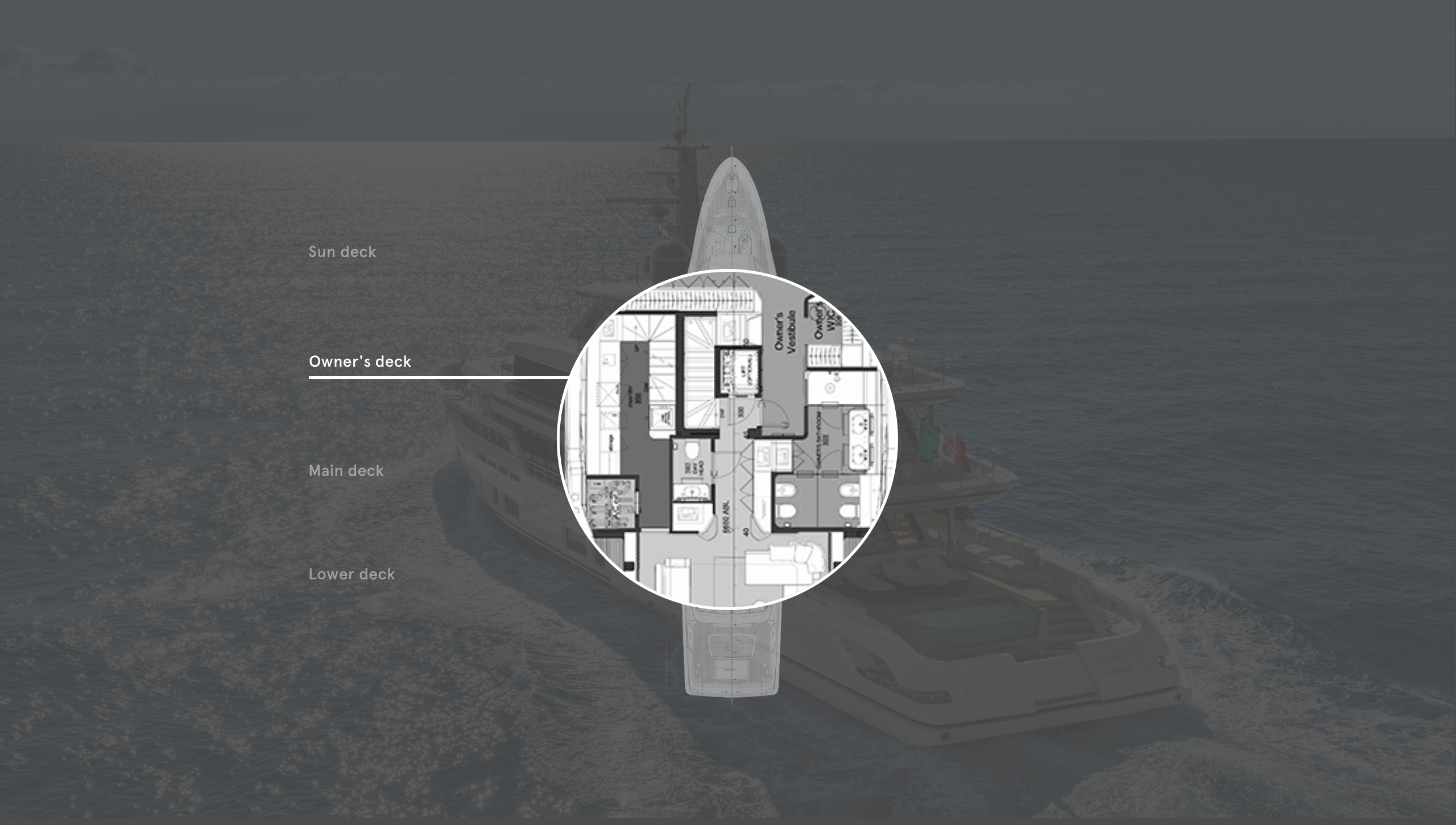
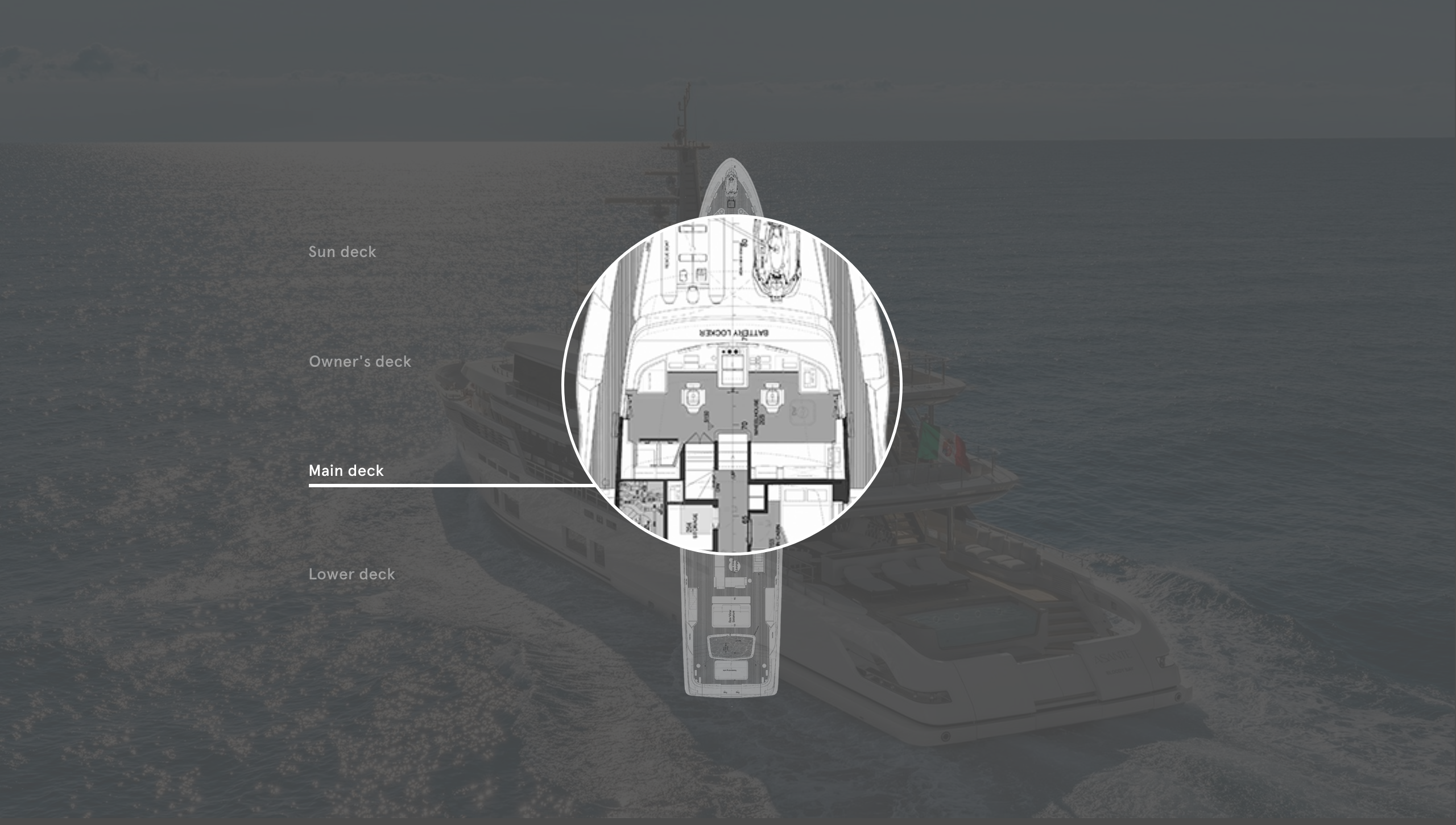
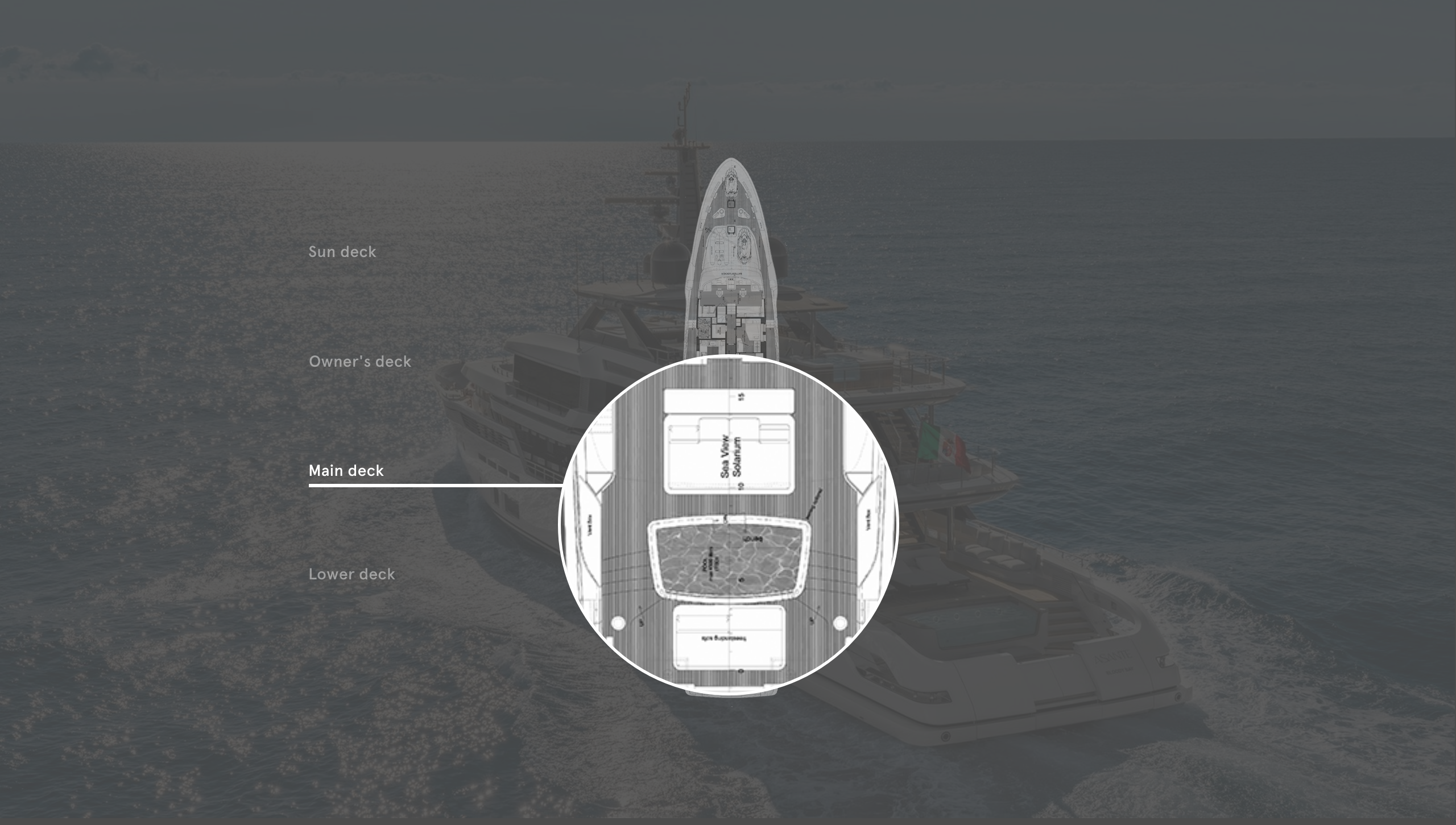
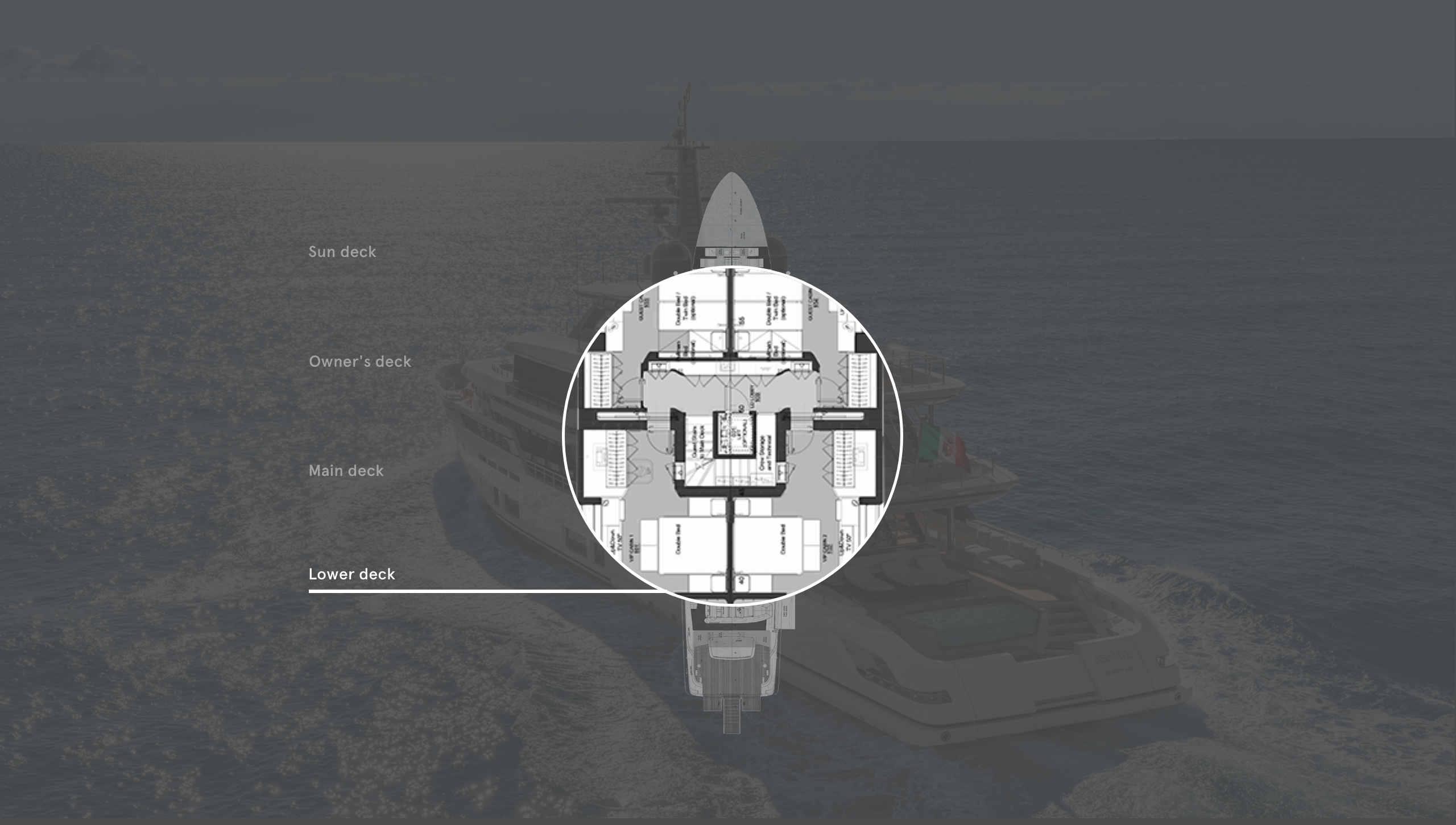
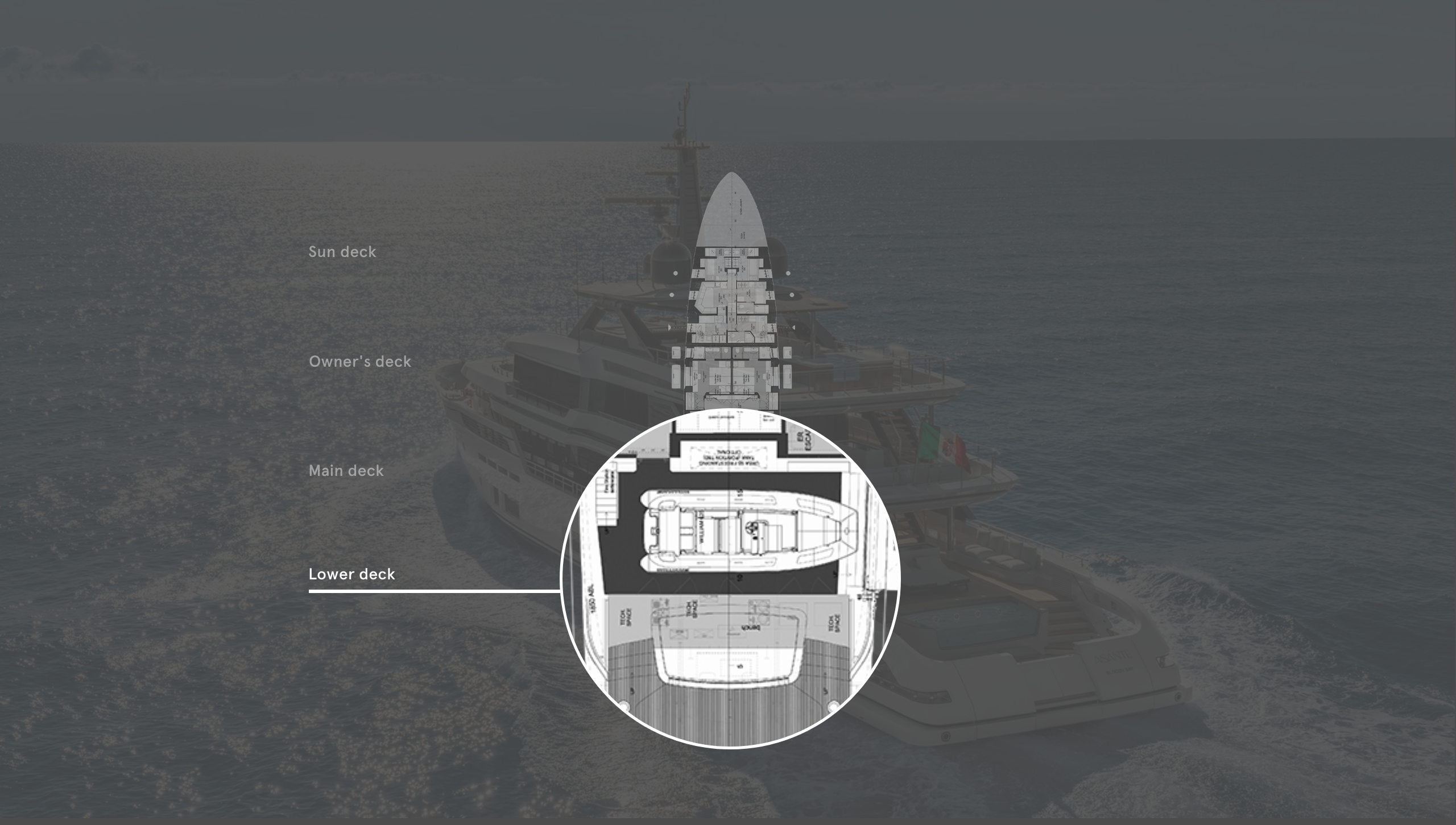
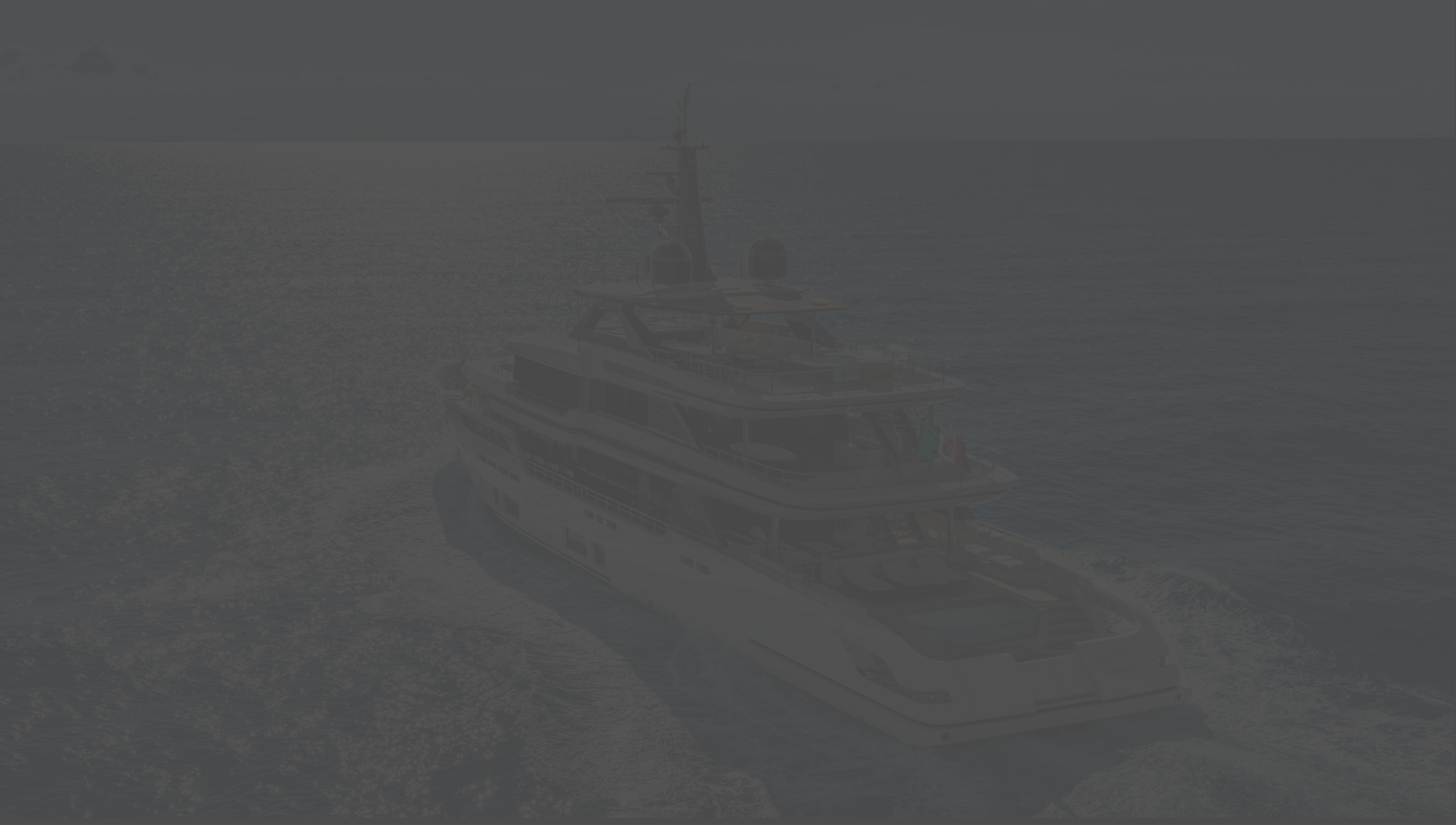
The sundeck rivals yachts 10 metres longer in size
With cabin forward and saloon aft, the owner’s deck is a private apartment
A lift is an option
The wheelhouse is elevated a bit for better views under way
The pool connecting the aft deck to the beach club is 7.6m2
Different guest configurations are possible for sleeping up to 12 (including the owner’s suite)
A 6.25m tender stows neatly away
LOA 49.94m | Gross tonnage |
LWL 45.35m | Engines |
Beam 9.6m | Generators |
Stabilisers | Speed (max/cruise) |
Draught (half load) | Tenders |
Range at 10 knots | Owners/guests 12 |
Fuel capacity | Crew 9 |
Freshwater capacity | Construction |
Classification | Naval architecture |
Exterior design | Builder/year |
Interior design | +39 071 5011111 |


